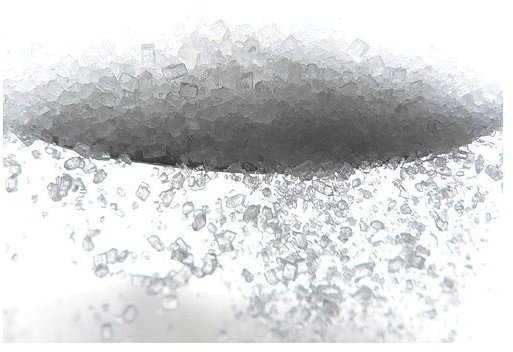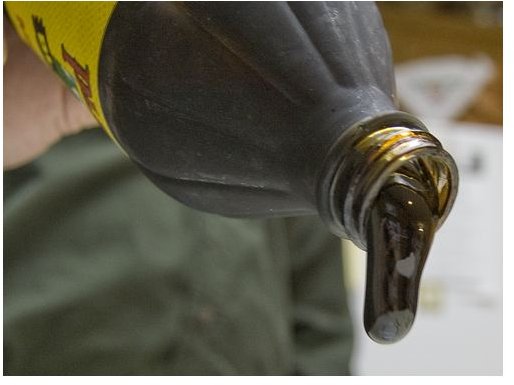Tips for Using Molasses in Gardening and Sugar in Your Soil
Why put molasses and sugar in your soil? These sweeteners are great for making cookies or adding sweetness to food, but they are also very useful in the garden. They act as a source of food for beneficial microbes. What difference does that make? Well, healthy, thriving, well-fed microorganisms equals a healthy, thriving garden. Have you ever been told that eating a cup of yogurt a day will increase your health? Increasing the micro-life of the soil is just as beneficial.
Dousing the soil with food for microbes builds up microbe populations. These little critters break down organic matter, and they can even consume and break down pollutants in the soil. The result? Cleaner, richer soil that is easy for plants to absorb nutrition from, and thereby stronger, more resistant plants.
Adding Molasses
Molasses is an excellent natural sweetener for plants (as well as for you!). It is not only a sweet source of energy, but it is rich in beneficial nutrients. What is the most ideal way to use molasses in gardening? Dried or as a liquid? How much, and when?
Dried molasses products for organic gardening are not literally dried molasses, but rather a grain (such as soy) that has been doused with liquid molasses. What are the benefits? Dried molasses becomes a ready source of energy to stimulate microbe activity and life. It is also a good source of soil nutrients, such as carbon, potasssium, and iron. Both dried and liquid molasses also repel fire ants.
How to use? Look for a quality product that has a sugar level of around 42%. Dried molasses as a natural organic fertilizer can be found at most garden stores. Twenty pounds per 1,000 square feet is recommended, although using less may actually yield better results. Add to the soil when it is dry outside and when it is not going to rain for a few days. Do not add water. Water plus dried molasses equals a sticky mess.
Liquid molasses on the other hand is pure molasses. It is a rich, syrupy source of food for microorganisms, as well as a source of carbon and sulfur for the soil. Use about 2 quarts per acre. To use dilute one ounce of molasses in one gallon of water and spray onto the soil. Keep in mind, darker, high quality molasses is richer in trace minerals and more beneficial.
Adding White Sugar
What about putting sugar in your soil? Like molasses, white sugar will feed microorganisms, indirectly enriching the soil with beneficial

microbes. A sprinkle of sugar over the soil may also be used to help deter weed growth. How? When the microorganisms feed on the sugar they also take nutrients from the soil. If weed growth is due to too much nitrogen and other nutrients than this solves the problem. The weeds do not have an abundance of food to grow, while plants may be able to survive with a lower nutrient content. Research done at Charles Sturt University (according to an article written by Margrit Beemster in the 2005, “A Sweet End to Weeds”) showed that sugar actually deters weed growth by tying up nitrogen in the soil.
How to use? Sprinkle sugar as is on your lawn or soil. Then water well. Give the sugar and microbes a week or two to do their work. How much? For now there is no standard directions on white sugar use. Try adding a small amount over your lawn. With both sugar and molasses in gardening there is a lot of reference to positive results, but there may be such a thing as too much. When buying molasses from a gardening store, you can simply read the instructions on the label for a recommended dosage. If using molasses or white sugar from the kitchen cabinet, start with smaller amounts.
Molasses and white sugar may be a sweet treat for your garden, feeding microbes and enhancing soil quality. White sugar may also play a role in weed control. They are safe, natural, methods of organic gardening that can be used instead of chemical products.
References
Dirt Doctor https://www.dirtdoctor.com/organic/garden/view\_question/id/2156/
Garden Rant https://www.gardenrant.com/my\_weblog/2006/11/do\_you\_take\_sug.html
Try Organic Gardening https://www.tryorganicgardening.com/organic-gardening-sugar.html
Rodale Institute https://newfarm.rodaleinstitute.org/depts/talking\_shop/2005/0305/texas.shtml
photo credit: Technicool (CC/flickr) https://www.flickr.com/photos/technicool/3318487786/sizes/m/in/photostream/
photo credit: Kaibara (CC/flickr) https://www.flickr.com/photos/kaibara/139793866/sizes/m/in/photostream/
